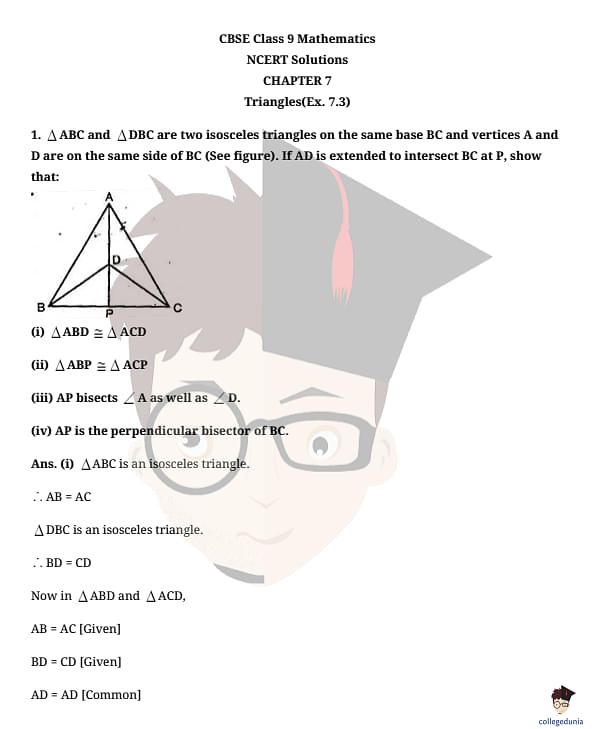
Content Curator
NCERT Solutions for Class 9 Maths Chapter 7 Triangles Exercise 7.3 Solutions are based on the concepts of SSS congruence rules and RHS congruence rules.
Download PDF: NCERT Solutions for Class 9 Maths Chapter 7 Exercise 7.3 Solutions
Check out NCERT Solutions for Class 9 Maths Chapter 7 Exercise 7.3 Solutions






Read More: NCERT Solutions For Class 9 Maths Chapter 7 Triangles
Exercise Solutions of Class 9 Maths Chapter 7 Triangles
Also check other Exercise Solutions of Class 9 Maths Chapter 7 Triangles
- NCERT Solutions for Class 9 Maths Chapter 7 Triangles Exercise 7.1 Solutions
- NCERT Solutions for Class 9 Maths Chapter 7 Triangles Exercise 7.2 Solutions
- NCERT Solutions for Class 9 Maths Chapter 7 Triangles Exercise 7.4 Solutions
- NCERT Solutions for Class 9 Maths Chapter 7 Triangles Exercise 7.5 Solutions
Also Check:
Also check:





Comments